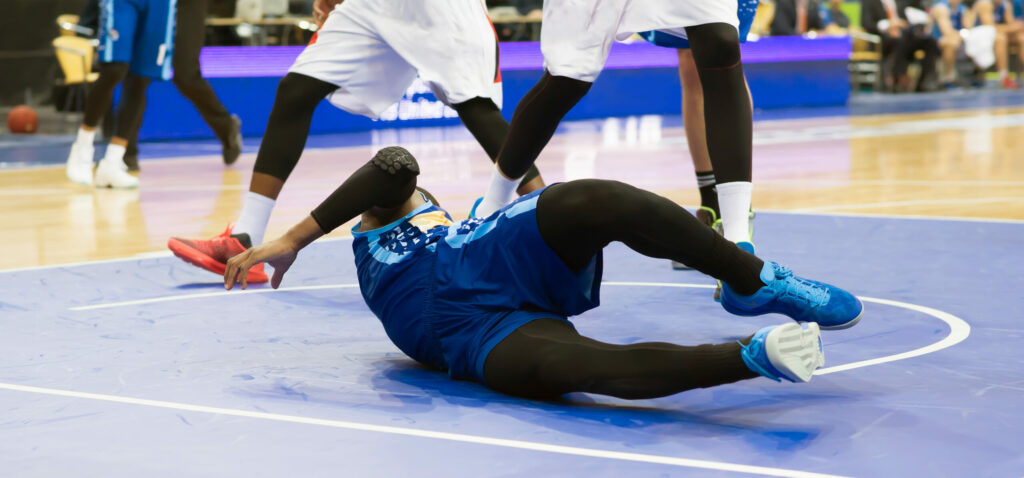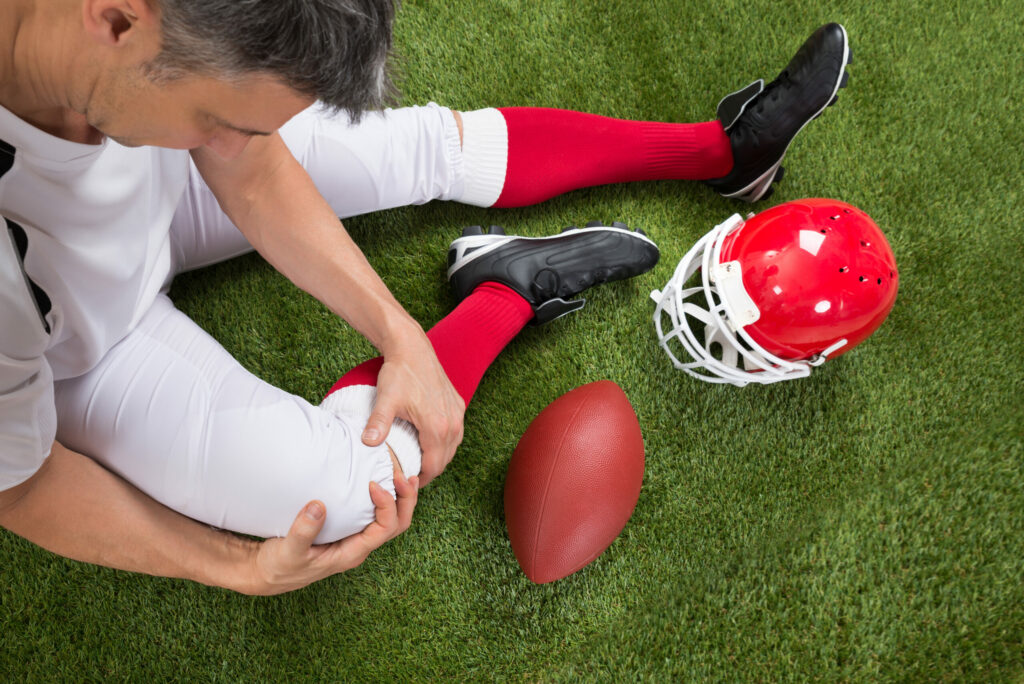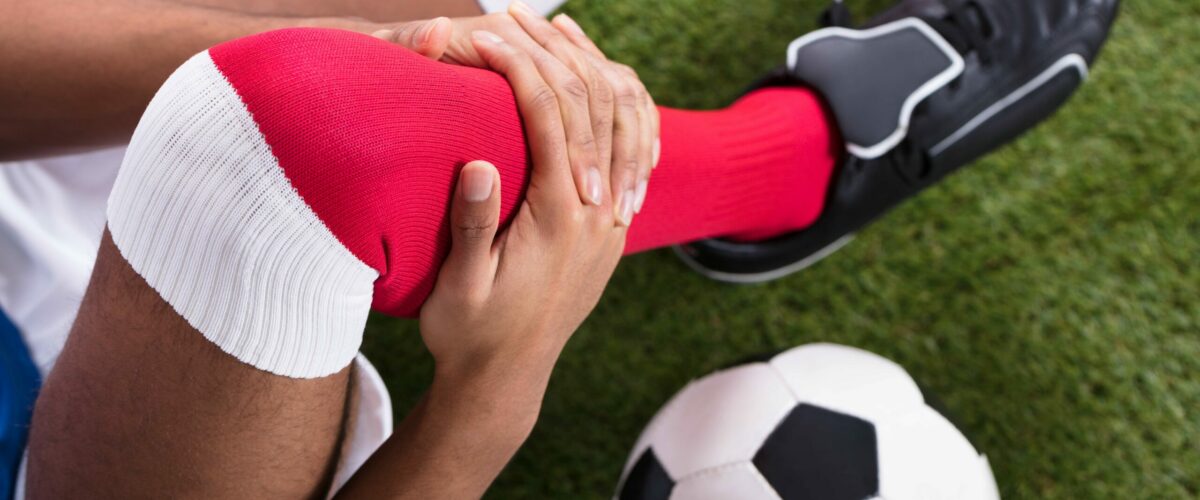As a college athletic trainer or program risk manager, you’re tasked with bringing out the best in your student-athletes while reducing risk to the program and the budget. However, as you strive for greatness, you may face difficulties dealing with sports injuries within your team. Promising athletes in a variety of sports—including football, lacrosse, soccer, baseball, basketball, or others—could experience any of these most common athletic injuries to the shoulder, lower back, groin, knee, foot, or ankle during practice or a game.
Can you keep sports injuries from sidelining your players and program? College sports insurance from A-G Administrators may be the solution you need to even the score against accidents.
How Common Are College Sports Injuries? And Can You Reduce the Risk?
Unfortunately, more than 1 million college sports injuries occur each year, making them very common.
Among the types of injuries that occur, student-athletes routinely suffer from:
- Hip flexor strains
- Ankle sprains
- Concussions and other head injuries
- Stress fractures and broken bones
- Groin pulls
- Sciatica
- Shin splints
- Hamstring strains
- Golf or tennis elbows
- Shoulder injuries, including dislocations and rotator cuff tears
But when it comes to the most common athletic injuries, college sports injury statistics show that knee injuries are number 1. A study by the National Collegiate Athletic Association (NCAA) found that knee injuries accounted for more than 35 percent of all sports-related injuries suffered by college student-athletes during a five-year period.
 What Causes Knee Injuries in Student-Athletes?
What Causes Knee Injuries in Student-Athletes?
Basketball, football, soccer, track and field, and volleyball are just a few of the sports that require players to have healthy knee joints to perform at their best. Sudden or repetitive movements or pressure on the knee joint can result in knee pain and injury when running, jumping, or pivoting. A few of the most common sports knee injuries in student-athletes are:
- Osgood-Schlatter Disease: A player gets this condition when the patellar tendon in the knee pulls against the top of the shinbone.
- Patellar Tendonitis (Jumper’s Knee): This condition causes swelling and inflammation of the tendon between the kneecap and shinbone. Basketball and volleyball players are particularly prone to developing this condition.
- Patellofemoral Pain Syndrome (Runner’s Knee): This is a common injury affecting track and field athletes. It is a cartilage irritation on the underside of the patella (kneecap).
- Fracture: This type of knee injury may be more common in athletes who place the majority of their weight on one leg.
- ACL Tear: This occurs when the anterior cruciate ligament (ACL) in the knee is overstretched or torn. Tears are usually difficult to recover from and may result in permanent loss of mobility.
Knee injuries can occur from either excessive wear and tear or sudden trauma. Some injuries, such as patellar tendonitis, can heal with sufficient time and rest, but others have far-reaching and life-altering effects. Such injuries frequently necessitate expensive surgery and months of physical therapy to heal properly.
 What Is the Most Common Sports Knee Injury?
What Is the Most Common Sports Knee Injury?
An ACL tear is the most severe and common sports knee injury, accounting for about 40% of traumas. ACL tears are often career-ending.
How Do Common Sports Injuries Affect Your Team and Program?
Athletes may face physical and mental setbacks while in recovery. Watching their teammates go on without them can be a difficult emotional blow. The team also loses a valuable asset, which could affect their season’s outcome, especially if the injured athlete has exceptional talent.
And when it comes to the program, injuries can also impact your department’s budget, affecting finances because of medical claims and lost performance revenue.
 How Can You Protect Athletes and Programs from the Risk of Sports Injuries?
How Can You Protect Athletes and Programs from the Risk of Sports Injuries?
College athletic trainers can help prevent athletic injuries by ensuring their players have proper nutrition, hydration, and form when exercising. They must also be careful not to overtrain their athletes, as this could put undue stress on their bodies.
Another responsibility of a trainer is to perform accurate risk assessments. For example, it may be prudent to remove some players from a game before it ends to avoid injuries if victory is certain.
Athletes can also take preventive measures to reduce knee injuries, such as:
- Keeping a healthy body weight
- Stretching before and after practice and practicing proper technique
- Wearing knee pads and other protective gear
- Avoiding practicing on unstable or uneven surfaces
- Wearing correctly-sized shoes with adequate arch support
These measures on the part of the trainer and athlete can significantly reduce athletic injuries.
The #1 Way to Reduce the Impact of Sports Accidents
Even with the best of intentions and extra precautions, some team members are bound to get hurt. Unfortunately, many student-athletes and sports programs underestimate the likelihood and severity of injuries. As a result, they are unprepared for the consequences when they occur.
A-G Administrators offers comprehensive college sports insurance that keeps all of your sports programs protected from the high costs of accidents. But we don’t stop there. We also offer risk management services to help lower risk to both the players and the program.
Our risk management solutions include:
To find out more about the most common athletic injuries, their impact on programs, and how your school compares to its peers, download this study. You can also talk to us by completing this form. We look forward to helping you and your program reduce the cost and risk of injuries.

 What Causes Knee Injuries in Student-Athletes?
What Causes Knee Injuries in Student-Athletes? What Is the Most Common Sports Knee Injury?
What Is the Most Common Sports Knee Injury? How Can You Protect Athletes and Programs from the Risk of Sports Injuries?
How Can You Protect Athletes and Programs from the Risk of Sports Injuries?
